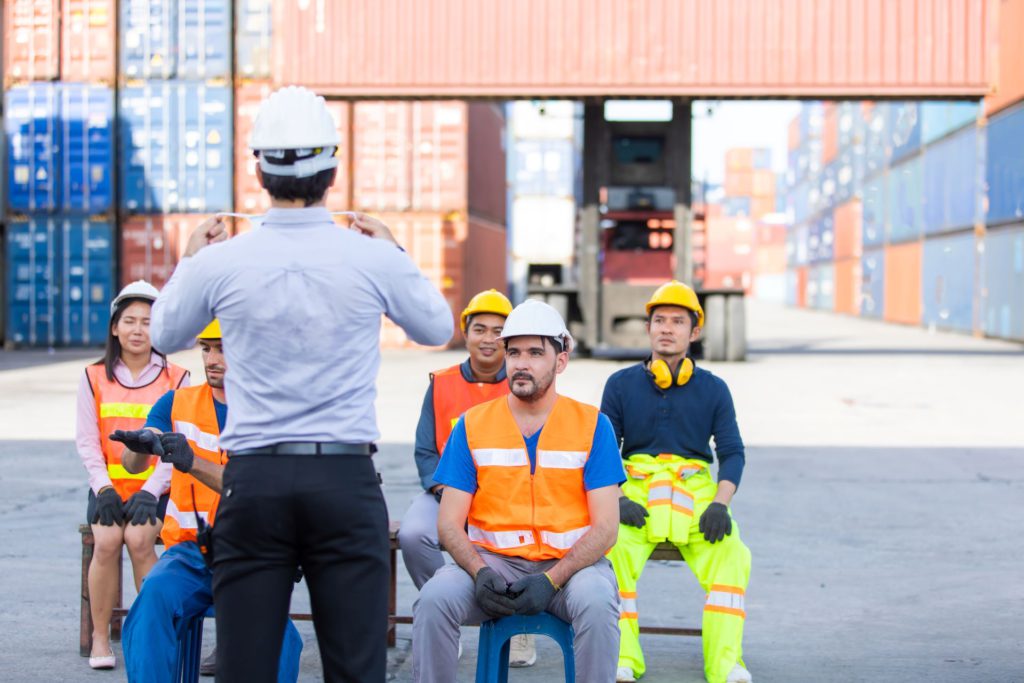All employers bear the responsibility to protect the safety and health of their employees. And a safety culture is even more important for those in the construction industry.
Constructions sites are dangerous places surrounded by heavy machinery, unfinished structures, and construction materials. Plus, with several workers working at the same time, a construction site is one of the busiest and most chaotic workplaces.
As an employer or construction manager, how do you minimize hazardous conditions and risky conditions? This article shares safety measures to implement for protecting your construction workers.
1. Set Up Safeguards
One of the best ways to ensure safety on construction sites is to place engineering controls such as heavy concrete barriers, safeguards, and fences. These structures can help isolate people from hazardous areas with chemicals or high-voltage electricity.
What’s more, guardrails and proper erection of scaffoldings are necessary to prevent falls when working at heights. It may also be helpful to employ safety nets or padding to allow for a softer landing, in case of accidental falls.
2. Give Workers The Correct Protective Gear
Wearing the right personal protective equipment can mean the difference between a minor injury and a disabling injury or even a fatality.
Thus, you should provide your workers with the protective gear appropriate for the type of their work. These gears include ear protections, hard helmets, knee pads, safety goggles, hi-vis jackets, insulated gloves, and so much more. If these gears become unfit for their purpose or become worn out, replace them immediately.
That said, having the best gear shouldn’t be enough. You should also make sure that your workers wear them at all times when working.
3. Leverage Technology
Current technology can help in keeping construction sites a lot safer for everyone. For instance, wearables are now being used to monitor each construction worker. This technology is embedded into protective gears such as safety vests to monitor vital signs of workers such as heart rate, skin temperature, and respiration rate.
Some wearables like lone worker devices come with life-saving features such as check-in, panic button, or automatic non-movement alerts to monitor an employee who’s working separately. Find out what a lone worker device is here.
In addition, sensors and monitoring technology can be deployed across strategic areas of a construction site to monitor things such as temperature, noise levels, and dust particulates to limit exposure. Moreover, data from these technological devices can be collected to analyze and help you plan for mitigation strategies to ensure a safer working environment.

4. Keep Work Areas Clean
From various tools and heavy machinery used by your workers to rubble and waste created during work—construction sites are notorious for being messy. However, a clean site is a safe site.
If a worker leaves materials or tools in an area when they’re not being used, it could result in tripping or other types of hazards to the next worker who arrives.
You should encourage your workers to maintain a clean and clear work area. Always remind them to put away any materials or return tools to their specific places after they finish working. This ensures that the workspace is ready for the next workers.
5. Regular Training Is A Must
Worker safety training isn’t a one-time thing. And there’s no such thing as too much safety training. This goes for newly hired employees and seasoned veterans alike. Continuous training can help ingrain safety culture in the minds of your workers.
Make sure to conduct a safety orientation for all workers—from how to properly wear protective gear to how to use heavy equipment. Cover first-aid plans and evacuation procedures as well. Workers should be trained not only on how to do their tasks correctly but also on how to perform these tasks safely, protecting themselves and their co-workers.
Takeaway
A strong focus on construction safety is obvious and critical. Not only is it required by the law, but it is also your moral obligation as an employer or construction manager to keep every single worker safe, ensuring that they can return home to their family every day.
You should take a closer look at your construction site and check if you’re doing all you can to protect your workers. The above list is by no means complete, and there are other safety measures to implement, depending on your work processes and conditions. Nevertheless, the aforementioned safety measures are your first steps toward a safer construction site. So make sure to strictly implement them right away and always.





